#grand duchess elena pavlovna
Explore tagged Tumblr posts
Text
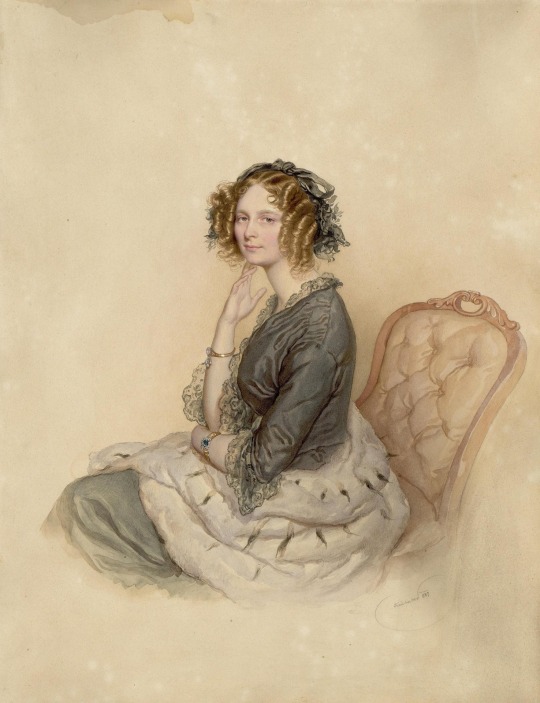
Grand Duchess Elena Pavlovna of Russia (nee Princess Charlotte of Wurttemberg) by Kriehuber.
64 notes
·
View notes
Text

“Royal Group”
This is an interesting picture, for more than one reason. First, lets see who is in it (I don't recognize them all but I will tell you who I recognize.) From left to right, the second woman in white is Grand Duchess Elena Vladimirovna; there is a woman I don't recognize behind her and then comes her mother, Miechen ( Grand Duchess Maria Palovna the Elder.) in front of Miechen, sitting on a step is Nicholas Nicholaievich (Nicholasha); slightly behind Grand Duchess Maria Pavlovna is Olga Paley, Grand Duke Pavel Alexandrovich’s wife. Pavel is next to her, the only person in the picture sitting on a chair. In front of him there is an older gentleman in military garb, whom I don't recognize. Next to him sits a very young Grand Duke Andrei Vladimirovich. Sitting slightly behind Andrei is his brother Grand Duke Boris.
There are at least four interspersed ladies I don't recognize, as well as several officers. All the way to the right, stands the unmistakable Grand Duke Vladimir Alexandrovich.
When I first saw this picture, I noticed that Miechen is resting her hand on Nicholasha’s neck in what to me appeared like a rather intimate gesture. And of course, some time after that I read that there were rumors that Miechen and Nicholasha had an affair (the source for that is not a consistently reliable one.) I don't believe the rumours. Nicholasha was no fool and in no position to offend his older and more powerful cousin, Vladimir, known for his fiery temper. Plus most of the literature states that Miechen and Vladimir we're very well matched and loved each other. But there is the hand…on…Nicholasha’s…neck…
#russian history#imperial russia#vintage photography#Grand Duchess Maria Pavlovna the Elder#Grand Duchess Elena Pavlovna#Grand Duke Vladimir Alexandrovich#Grand Duke Nicholas Nicholaievich#Nicholasha#Grand Duke Andrei Vladimirovich#Grand Duke Boris Vladimirovich#Grand Duke Pavel Alexandrovich#Olga Paley
25 notes
·
View notes
Text

"The Grand Duke and the Grand Duchess Vladimir spent their summers at Tsarskoe Selo. The Grand Duchess had the graceful bearing of a great lady of the Renaissance. She was born a Princess of Mecklenburg-Schwerin, and ranked immediately after the two Empresses. She was very able and intelligent and carried out all the duties of her position with perfect tact. She was always very kind to me, and was much entertained by accounts of my adventures. For a long time, I was in love with her daughter the Grand Duchess Helen Vladimirovna, later Princess Nicholas of Greece, whose beauty fascinated me. She had the loveliest eyes imaginable, and everyone fell under their charm." -Prince Felix Youssoupoff, Lost Splendor
#Grand Duchess Maria Pavlovna#Grand Duchess Elena Vladimirovna#Prince Felix Yusupov#Prince Felix Youssoupoff#Romanov#Yusupov#Yussupov#Youssoupoff#Youssoupov
128 notes
·
View notes
Text

Alexandra and Elena Pavlovna of Russia
Artist: Élisabeth Louise Vigée Le Brun (French, 1755–1842)
Title: Portrait of the daughters of Emperor Paul I
Genre: Portrait
Date: 1796
Medium: Oil on Canvas
Collection: Hermitage Museum, Saint Petersburg
Depicted People:
Grand Duchess Alejandra Austria Pavlovna of Russia
Grand Duchess Elena Pavlovna of Russia
#portrait#elisabeth louise vigee le brun#french painter#french art#french artist#18th century art#russian culture#grand duchess alejandra austria pavlovna of russia#russian nobility#grand duchess elena pavlovna of russia#18th century fashion
8 notes
·
View notes
Photo
My fav picture of Miechen with Elena! 🥺🫶

Grand Duchess Maria Pavlovna and her daughter, Grand Duchess Elena Vladimirovna
30 notes
·
View notes
Text




The Royal Jewels of Iverny (part 1)
Queen Catherine's Emerald Diadem
Out of any tiara in the Ivernian royal collection, none are more closely associated with one specific member of the royal family than the emerald and diamond kokoshnik often worn by Princess Claudia, Princess Royal. While it is lovingly called "Princess Claudia's Tiara" by both the public and the royal family, the tiara is formally known as Queen Catherine's Emerald Diadem.
In 1891, Grand Duchess Yekaterina Alexandrovna of Russia, a great-granddaughter of Emperor Paul I of Russia, was betrothed to the third son of King Philip III of Iverny and Queen Mary Josephine, Prince Richard, the future Duke of Ettinger. As a wedding gift, the bride's parents commissioned a kokoshnik tiara set with emeralds from the collections of the bride's grandmothers, Grand Duchess Elena Pavlovna and Grand Duchess Anna Feodorovna. The young Yekaterina was delighted, and the tiara became a beloved reminder of home as she entered in to a new chapter of life in Iverny as Duchess of Ettinger.
After the tragic and sudden death of her niece Queen Jane II in the fall of 1918, Catherine stepped into her new role as consort alongside her husband, the newly crowned King Richard V. Her emerald kokoshnik tiara was worn for countless state dinners, galas, balls, and portraits throughout her eight-year tenure as queen, and into the 1930s and 1940s in her role as Queen Mother.
In 1949, on the occasion of her granddaughter's 15th birthday, Queen Catherine gifted the tiara to King Arthur V's only daughter, Princess Catherine. The young Princess Royal was said to be "positively elated" by the gift from her namesake. The Princess Royal wore the tiara regularly up until the early 1970s, when she gifted it to her niece, Princess Claudia. Reportedly, the note given to Princess Claudia alongside the tiara read "from one Princess Royal to Another, from your dear Aunt Cathy."
Princess Claudia first debuted Queen Catherine's Emerald Diadem in 1972. Over the past fifty years, the Princess Royal has worn the tiara almost exclusively, from her brother's coronation in 1976 to her own wedding in 1988 to nearly every state dinner. It is unknown if the Princess Royal will continue to wear the tiara into her old age, or if she will pass it on to her own niece, the junior Princess Royal, Princess Caroline, Countess Hatheway, as many anticipate.
HRH Catherine, Duchess of Ettinger, wears the yet-unnamed tiara in a portrait photograph, 1893.
HM Queen Catherine's first official painted portrait in her role as Queen consort, 1921.
HRH Princess Catherine, Princess Royal, wears her grandmother's Emerald Diadem at the French State Dinner, 1957.
HRH Princess Claudia, Princess Royal, shakes hands with guests at His Majesty's Charity Benefit Gala in Gaucelin, 1980.
post inspired by @warwickroyals 💙
#sims 4#ts4 royalty#the lorimers#ivernian royal jewels#lorimers: queen catherine#lorimers: princess catherine#lorimers: claudia#bluep.txt
33 notes
·
View notes
Text

Princess Marina, Duchess of Kent (born Princess Marina of Greece and Denmark was a Greek and Danish princess by birth and a British princess by marriage.
She was a daughter of Prince Nicholas of Greece and Denmark and Grand Duchess Elena Vladimirovna of Russia, and a granddaughter of King George I and Queen Olga of Greece. Princess Marina married Prince George, Duke of Kent, fourth son of King George V and Queen Mary, in 1934. They had three children: Prince Edward, Princess Alexandra, and Prince Michael.
Princess Marina was born on 13 December 1906 in Athens, Greece, during the reign of her paternal grandfather, George I of Greece. She was the third and youngest daughter of Prince Nicholas of Greece and Denmark, and his wife Grand Duchess Elena Vladimirovna of Russia. Her father was the third son of George I of Greece and Queen Olga, while her mother was the only daughter of Grand Duke Vladimir Alexandrovich and Grand Duchess Maria Pavlovna of Russia. Her father was a grandson of Christian IX of Denmark, while her mother was a granddaughter of Emperor Alexander II of Russia.
Princess Marina had two elder sisters, Princess Olga and Princess Elizabeth. Princess Olga married Prince Paul of Yugoslavia in 1923. After the assassination of his cousin, Alexander I of Yugoslavia, Paul served as Prince Regent of Yugoslavia from 1934 to 1941. Princess Elizabeth married Carl Theodor, Count of Toeering-Jettenbach in 1934.
One of their paternal uncles was Prince Andrew of Greece and Denmark, the father of Prince Philip, Duke of Edinburgh (making Marina and her sisters Philip's first cousins).
14 notes
·
View notes
Text

Grand Duchess Elena Pavlovna, second daughter of Paul and Maria Feodorovna, in Russian dress, 1789.
24 notes
·
View notes
Text
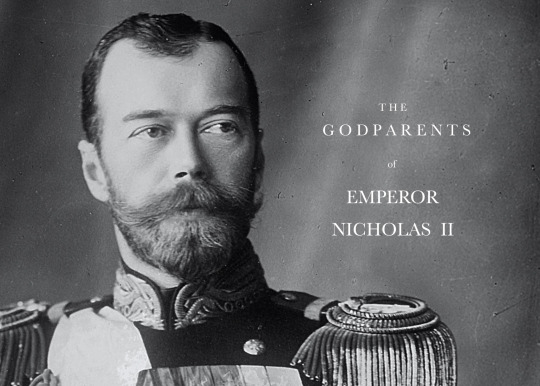
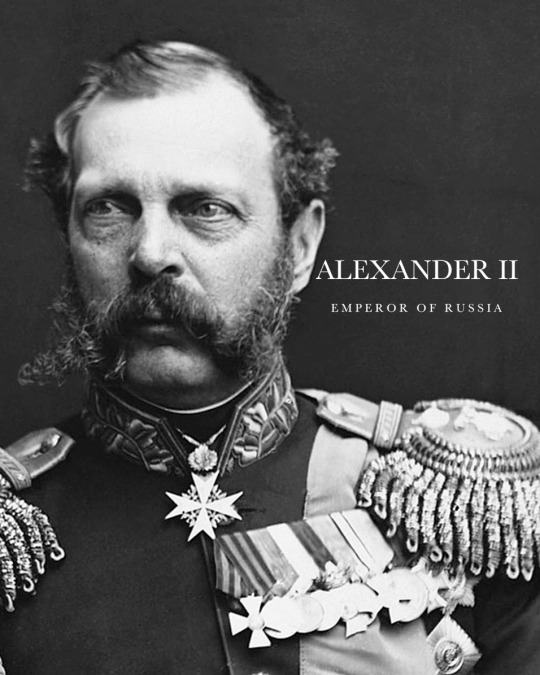
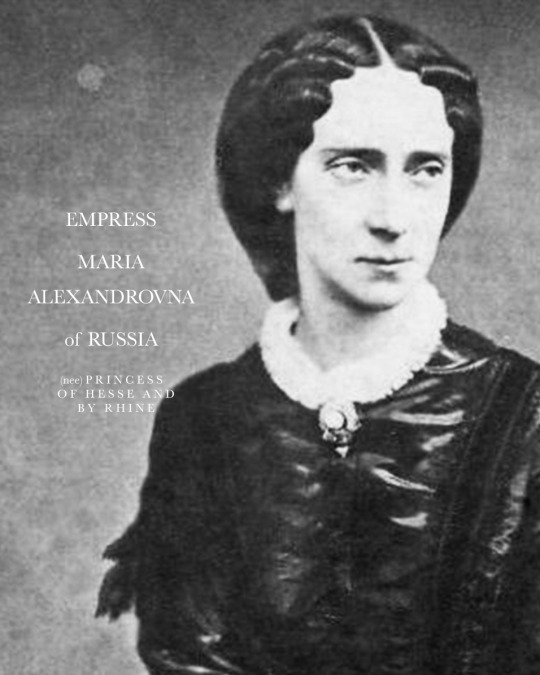
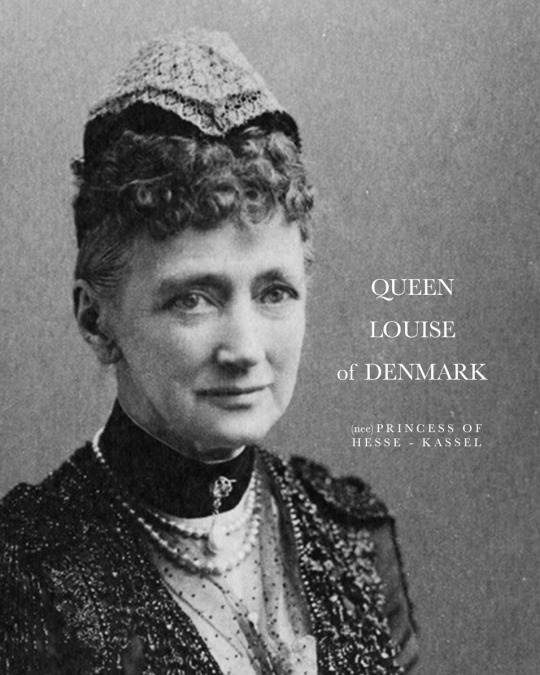

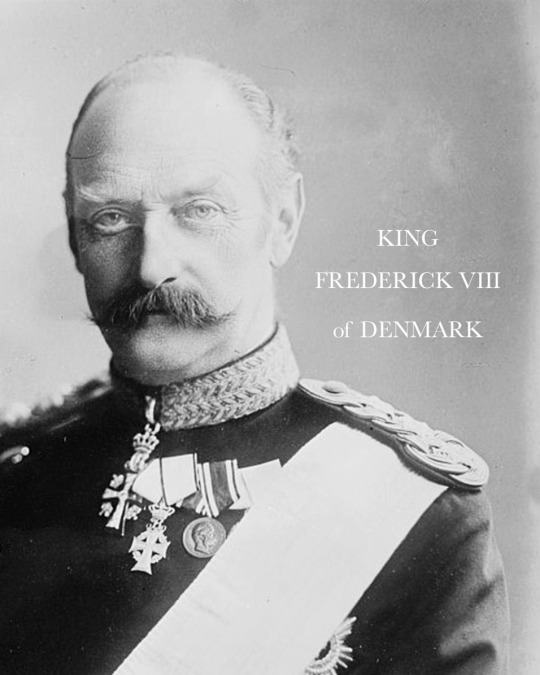
GODPARENTS OF NICHOLAS II
Born during his grandfather's reign on 18 May (New Style) 1868 at the Alexander Palace, Tsarkoe Selo in Saint Petersburg. He was the eldest son of Alexander III and his wife Maria Feodorovna (then, the Tsarevich and Tsarina of Russia). He was christened on 1 June at the Chapel of the Resurrection of the Catherine Palace at Tsarskoe Selo, by the confessor of the imperial family, protopresbyter Vasily Borisovich Bazhanov. His godparents were:
ALEXANDER II, EMPEROR OF RUSSIA - his paternal grandfather, the Russian Emperor stood as one of the godparents. He became the Emperor of All Russia in 1855. Alexander’s most significant reform as emperor was the emancipation of Russia’s serfs in 1861, for which he is known as Alexander the Liberator. He was assassinated in 1881 when the young Nicholas was only 12 years-old, to which he became the heir apparent upon his death.
PRINCESS MARIE OF HESSE AND BY RHINE, EMPRESS MARIA ALEXANDROVNA OF RUSSIA - his paternal grandmother, the consort of Emperor Alexander II, was another of his godparents. Known for her intellect, she was one of the founders of the Russian Red Cross Society. However, she suffered from tuberculosis from 1863 and spent long stays in southern Europe to avoid harsh winters. Although she and her husband were unofficially separated sometime after the death of their eldest son, Maria was treated with respect and love by her surviving family. Maria passed away from illness when the young Nicholas was still a child.
PRINCESS LOUISE OF HESSE-KASSEL, QUEEN CONSORT OF DENMARK - his maternal grandmother was listed as one of his godparents. Louise became the Queen consort of Denmark upon her husband's - King Christian IX - accession in 1863, just few years before her grandson Nicholas' birth. She, herself, was a niece of another King of Denmark (Christian VIII). The great dynastic success of Louise's six children was to a great extent a result of Louise's own ambitions - through them, she was a grandmother of not only the future Tsar of Russia (Nicholas II), but also that of King George V of the United Kingdom; King Constantine I of Greece; King Christian X of Denmark, and King Harken VII of Norway.
GRAND DUCHESS ELENA PAVLOVNA OF RUSSIA - his great-great-aunt, the wife of the late Grand Duke Michael Pavlovich, was one of his godparents. Born as Princess Charlotte of Württemberg, she became a close friend of his grandmother the Empress Maria Alexandrovna, and was known as an intellectual. She was also considered the most exceptional woman in the imperial family since Catherine the Great.
KING FREDERICK VIII OF DENMARK - then, the Crown Prince, his maternal uncle stood as one of his godparents. During the long reign of his father, he was largely excluded from influence and political power. Upon his father's death in 1906, he acceded to the throne at the advanced age of 62. In many ways, Frederick VIII was a liberal monarch who was much more favorable to the new parliamentary system introduced in 1901 than his father had been, being reform-minded and democratically inclined.
Source
86 notes
·
View notes
Text
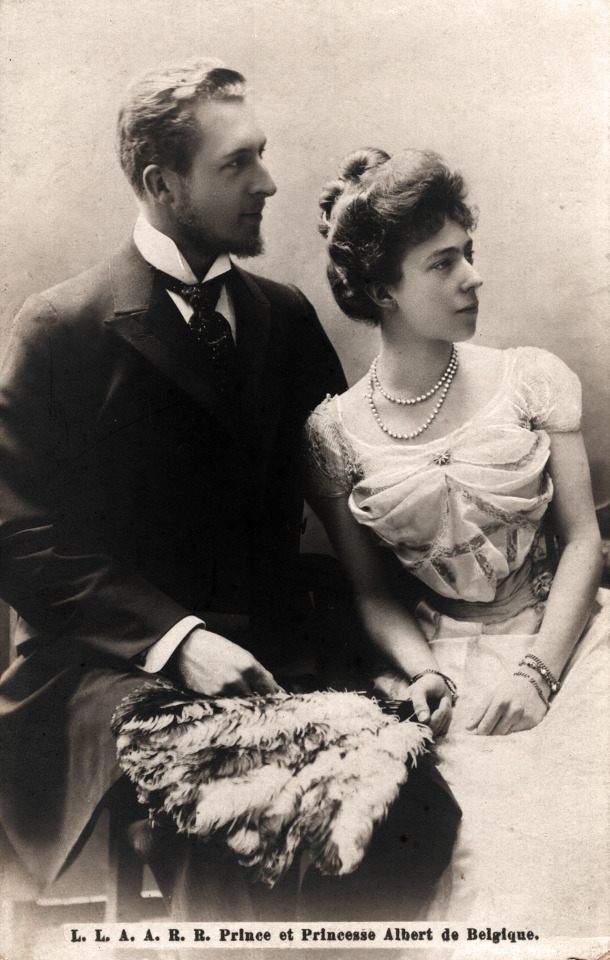
The future King Albert I and Queen Elisabeth of the Belgians.
Grand Duchess Maria Pavlovna the Elder had allegedly hoped that her daughter, Elena Vladimirovna, might marry the then-Prince Albert, heir to his uncle King Leopold II's throne. But before a visit to Russia could be arranged, the Belgian prince announced his engagement to Duchess Elisabeth in Bavaria, a niece of the famous Sisi. Funnily enough, Elena's middle daughter Elizabeth of Greece would grow up to marry a nephew of Queen Elisabeth's, Karl Theodor zu Toerring Jettenbach, the eldest son of Queen Elisabeth's sister Sophie.
#belgian royal family#albert i of the belgians#queen elisabeth of the belgians#elisabeth of bavaria#my collection#vladimirovichi
46 notes
·
View notes
Text

“I spent an evening with the Grand Duchess, who seemed charming to me in all respects, a charming face together with the finest expressiveness, the speech is lively, inspired, rich in meaning and expressiveness - it amazes and captivates you. The Grand Duchess knows how to touch on any topic with the same ease… she always begins a conversation with the desire to sincerely convey everything she thinks, so imbued with honesty. Over time, she will either become a great woman or an unhappy woman if her spiritual impulses and aspirations of the mind are somehow to be suppressed.”
- Princess M.A. Gagarina on Grand Duchess Elena Pavlovna of Russia (nee Princess Charlotte of Wurttemberg).
#princess m.a. gagarina#grand duchess elena pavlovna#romanov#russia#vladimir ivanovich hau#portrait#quotes
41 notes
·
View notes
Note
Is there any royal family that you dislike you can name more than 1 ;)
Grand Duke Vladimir Alexandrovich's family 😒
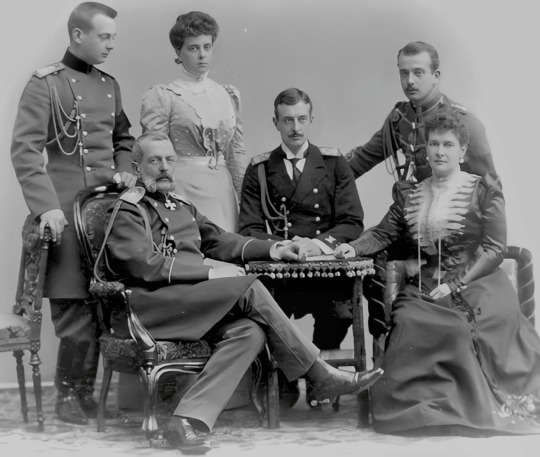
Of all the royals I've ever known, grand duke Vladimir Alexandrovich (paternal uncle of Tsar Nicholas II) and his family have always been my least favorite.☹️
They are my least favorite for the following reasons:
Grand Duke Vladimir Alexandrovich and his wife Grand Duchess Maria Pavlovna were hostile and disloyal to Emperor Nicholas II, who was Vladimir's nephew and Maria's cousin. They held a rival court at their palace in Saint Petersburg and spread malicious gossip about the Emperor and his wife Empress Alexandra Feodorovna.
Maria Pavlovna was ambitious and greedy, and used her influence to obtain money, jewels, and estates from the Tsar and other wealthy people. She also exploited her position as the president of the Russian Red Cross to embezzle funds and supplies for her personal use
She was arrogant and snobbish, and looked down on other members of the Imperial Family, especially those who married below their rank or were not of Russian origin. She also despised the Empress Alexandra Feodorovna, whom she considered a German spy and a bad influence on the Tsar
Kirill Vladimirovich, son of Vladimir Alexandrovich and Maria Pavlovna, is best known for his scandalous affair with his married first cousin, Princess Victoria Melita of Edinburgh.
Kirill and Victoria Melita got married years later, after Victoria Melita divorced her first husband. Their marriage was considered incestuous and morganatic by the Russian Orthodox Church and the Imperial Family, and caused a scandal in the Royal Courts of Europe and Great Britain
Kirill betrayed Emperor Nicholas II during the February Revolution of 1917, when he marched to the Tauride Palace wearing a red armband to show his support for the Provisional Government. He also renounced his rights to the Russian throne in 1917, but later claimed them back in 1924, proclaiming himself as the head of the House of Romanov and the rightful heir to the throne, despite the existence of other senior claimants.
Boris Vladimirovich is known for his scandalous affair with his married first cousin Queen Marie of Romania! Boris Vladimirovich was a notorious playboy and gambler, who spent lavishly on women, cars, and parties. He had numerous affairs and illegitimate children, and was involved in several scandals with actresses, dancers, and socialites. He was disloyal to his cousin, Emperor Nicholas II, and supported the February Revolution of 1917 that overthrew the monarchy. He also collaborated with the Bolsheviks and accepted their protection after the October Revolution, while most of his relatives fled or were killed. He was selfish and greedy, and used his influence to obtain money, jewels, and property from the Soviet government. He also sold some of his family's treasures and artworks to foreign collectors and museums.
Elena Vladimirovna was considered snobbish and vain by some people, including her mother's social rival, Dowager Empress Maria Feodorovna. She also allegedly refused to greet her sister-in-law Princess Marie Bonaparte and drew back her skirts as if not to be touched by her...
Andrei Vladimirovich had an affair with the famous ballerina Mathilde Kschessinska, who was also the former mistress of Nicholas II and two other grand dukes. He married her in 1921 and recognized her son as his, even though the boy's paternity was uncertain.
Thanks for Asking 🥰🫶
#Vladimir Alexandrovich#Maria Pavlovna#Kirill Vladimirovich#Boris Vladimirovich#Elena Vladimirovna#Andrei Vladimirovich
25 notes
·
View notes
Text

“Looking at the portraits of Grand Duchess Elena Pavlovna (Charlotte of Wurttemberg) I can say that she deserved much more, such a cultured, elegant and opulent woman, she deserved the title of "the greatest of the Grand Duchesses"” - Submitted by Anonymous
17 notes
·
View notes
Text
Grand Duchesses at the Coronation of Nicholas II and Alexandra Feodorovna
Nicholas II and his consort Empress Alexandra, were crowned on Tuesday, 14 May (O.S., 26 May N.S.) 1896, in Dormition Cathedral in the Moscow Kremlin. The magnificence of the occasion was never again seen in Russia. The Grand Duchesses were in full regalia. Here are two great photographs of them.

Above:
Sitting: Grand Duchess Alexandra Iosifovna (who had been present at the coronation of Alexander III); sitting on the floor at her knees is Princess Olga of Wurttenberg; sitting next to Alexandra Iosifovna is Princess Louise Margaret, Duchess of Connaught
Back Row Standing from Let to Right: Grand Duchess Vera Konstantinovna, Grand Duchess Anastasia of Mecklenburg-Schwerin, Grand Duchess Maria Pavlovna (the elder), Grand Duchess Elena Vladimirovna, Grand Duchess Elizabeth Mavrikievna, and Princess Elena of Saxe-Altenburg

Above:
In the center of this group, is Grand Duchess Marie Alexandrovna, (daughter of Tzar Alexander II, wife of Queen Victoria's second son Alfred, Duke of Saxe Coburg and Gotha, who is standing behind her.)
On the right side of Grand Duchess Marie Alexandrovna, is her daughter Victoria Melita, Princess of Saxe-Coburg and Gotha. Sitting to the left of her mother is the Crowned Princess of Romania, Marie (same name as her mother; known by the family as Missy). Her husband the Crowned Prince of Romania, Ferdinand, is standing slightly to the side, behind Missy.
Next to Ferdinand of Romania is Ernest Louis, Grand Duke of Hesse and By Rhine, husband of Victoria Melita at the time and brother of the Empress being crowned, Alexandra Feodorovna. To the right of Victoria Melita is her brother, Prince Alfred of Saxe-Coburg and Gotha who died at age twenty-four.
#Grand Duchess Vera Konstantinovna#Grand Duchess Alexandra Iosifovna#Grand Duchess Anastasia Mikhaelovna#Grand Duchess Anastasia of Meklenburg-Schewrin#Grand Duchess Marie Alexandrovna#Grand Duchess Elizabeta Mavrikievna#Grand Duchess Elena Vladimirovna#Princess Victoria Melita#Marie#Crown Princess of Romania#Missy#Princess Elena of Saxe-Altenburg#Princess Louise Margaret Duchess of Connaught#Princess Olga of Wurttenberg#imperial russia#romanov dynasty#Nicholas and Alexandra#Nicholas II#Coronation
29 notes
·
View notes
Text
The Lost Grand Duchesses part 2: Alexandra Pavlovna
When she was born at 7:40 in the morning in 1783, the baby Grand Duchess Alexandra Pavlovna was instantly viewed as second class. Her grandmother, Catherine II ‘the Great’, wrote “I infinitely more like boys than girls”, and told her staff that she found the newborn to be very ugly. She called the baby “a very ugly creature.” This dislike of Alexandra continued into her toddler years, when Catherine continuously compared the young Alexandra to her baby sister, insisting that little Elena was much more charming and intelligent than Alexandra.
Despite this, Alexandra adored her grandmother, who wrote that the little girl would do “anything just to please me.” Alexandra and Elena were painted together as a gift to Catherine, and the two little girls lovingly hold up and caress a diamond encrusted miniature portrait of their grandmother.

By the age of four, Alexandra’s education had begun, and her intelligence in languages (being fluent in four) and writing made Catherine finally pay more attention to her, but for entirely different reasons.
As soon as the little girl turned eleven, Catherine wrote that the little girl who loved to dance, draw, and play music, was now to be “considered an adult”, and be made to marry. “It is time for the older one to get married” she concluded, not even mentioning Alexandra’s name.

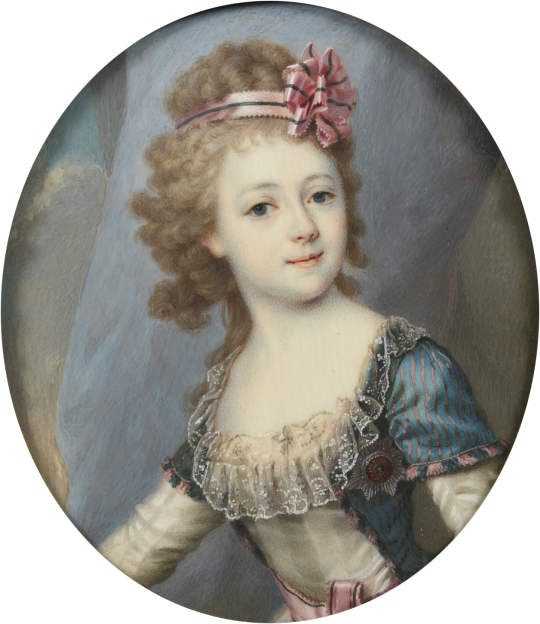
A long and embarassing debacle followed, in which the child was left at the alter. Catherine admitted that the young girl, not yet a teenager, often adopted a “confused look” when having to meet with potential husbands, and did not want to speak to them.
Catherine died in 1797, temporarily putting Alexandra’s fate in limbo. She returned to her daily life as an unmarried girl, and even published anonymous articles that she had translated in French under the pseudonym ‘A’. However, in 1799, the prospect of an Austrian-Russian alliance was apparently too attractive to pass on, and the thirty-year-old Archduke Joseph of Austria, the Palatine of Hungary, travelled to Russia to meet the thirteen-year-old Alexandra.
The marriage was finalised, and Alexandra was forced to leave Russia - and her family - in order to move to Hungary with her new husband. Joseph wrote a letter to his brother in which he stated he was “convinced that with this marriage my domestic bliss is assured for the entirety of my life.”
Alexandra, on the other hand, was miserable. Countess Varvara Golovina, a lady at court and potential lover of the Tsarina Elizaveta Alexeievna, wrote in her memoirs that Alexandra was sad, and did not want to be forced to leave Russia. Her father, Pavel I, constantly said that he would “not see her again” and that she was “being sacrificed.” Despite this, Pavel could have prevented the marriage at any time. A single lock of golden hair fashioned into a flower was all that she left behind.


Although Alexandra was popular in Hungary among all classes, she was deeply depressed. Her friendly and charming personality had been replaced by a new temperament which was “always serious and sad”. Alexandra especially did not get on well with her mother in law, the Empress Maria Theresa of Hungary, who was intensely jealous of the young girl’s popularity. Maria Theresa intentionally antagonised the teenager, and sought to treat her badly.
In 1800, Alexandra fell pregnant, and was struck with health problems. Her mother-in-law ordered the hiring incompetent doctors (known to her to be incompetent) and insisted that the doctors obey her orders, rather than present their own educated solutions. Orders from Maria Theresa included cooking meals which Alexandra would not be able to eat, making her weak and frail.
In March 1801, Alexandra gave birth to a little girl, named Alexandrine of Austria. The pregnancy and labour had been incredibly difficult, and the baby sadly passed away within a few hours of birth. Alexandra, depressed at having been forcibly taken from her home and after having to endure cruel treatment by her mother-in-law, said: ���Thank God that my daughter was now with the angels, without experiencing the miser that we are exposed to.”
Alexandra contracted puerperal fever. The doctors misdiagnosed her poor health after the birth several times, treating her for gastric diseases and typhoid rather than ‘childbed’ fever. She succumbed to the disease aged just seventeen years old.
Alexandra was not buried until two years after her death due to disagreements in the Catholic Austrian court over where to bury a Russian Orthodox. In 1981, thieves broke into Alexandra’s Mausoleum, looting her coffin and taking jewellery and clothing from her remains. Due to the vandalism, she was reburied with the deceased wives and children of her husband in the crypt of Buda Castle, which went against her wishes to be buried in an Orthodox Church. In 2004, she was reburied at the Üröm Mausoleum, in a small park surrounded by a moat. Inside the tomb, Orthodox icons line the walls, a reflection of Alexandra’s beloved faith, and her deep connection with Russia, which endured even after being “sacrificed”.
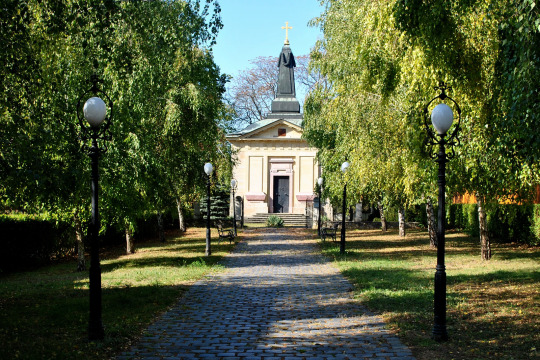
#the lost grand duchesses#alexandra pavlovna#what happened to her was so preventable#they just didn't love daughters enough to care#1700s#1800s#womens history#romanov#romanov family#russian history#hungarian history#pavel i#paul i#tsar paul#get the tissues out#justice for alexandra#the alexandra curse
16 notes
·
View notes
Text
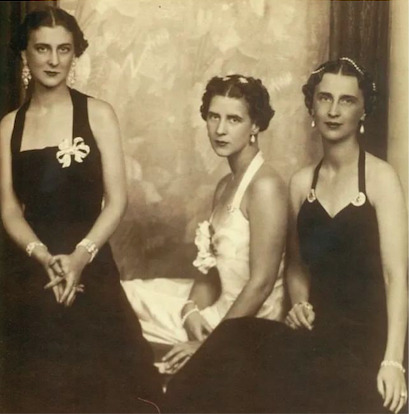
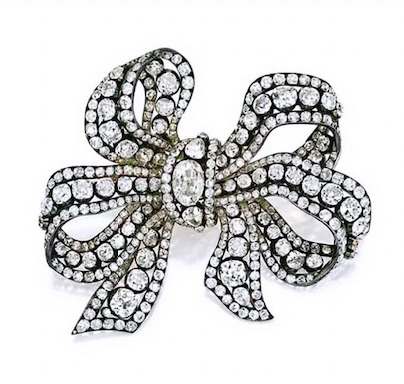
"Double Ribbon Bow" brooch worn Princess Marina of Kent and formerly from her mother, Grand Duchess Elena Vladimirovna (granddaughter of Emperor Alexander II and GRand Duchess Maria Pavlovna), circa 1850.
8 notes
·
View notes